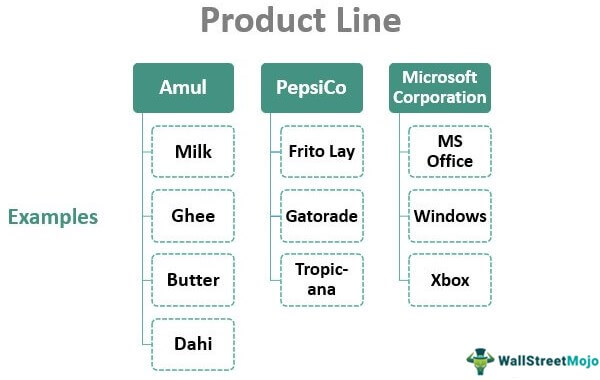Table Of Contents
What is the Product Line?
Product Line refers to the collection of related products marketed under a single brand, which may be the flagship brand for the concerned company. Typically, companies extend their product offerings by adding new variants to the existing products with the expectation that the existing consumers will buy products from the brands they are already purchasing.
Table of contents
- A product line is a group of similar items marketed under a single brand, which may be the company's flagship. Companies typically expand their product offers by introducing new varieties to everyday objects, with the idea that existing customers will buy products from the brands they already believe in.
- The objective is to leverage brand recognition and consumer loyalty.
- The phrase "product line extension" refers to the situation in which a corporation releases a new product that differs somewhat from the company's existing product line. It aims to boost the number of alternatives accessible to customers under a single brand.
Explanation
The concept revolves around the idea of leveraging brand awareness and customer loyalty. People usually are driven towards products of those brands that they have used in the past because they feel they can trust any new product under that brand. So, it is advisable to add a new product variant under an existing line of product or brand.
Some of the larger companies have multiple product lines marketed under various brand names, which is a strategy to differentiate the products from each other so that the companies can easily target the requisite customer segment for each brand.

How does the Product Line Work?
The product line is considered one of the best marketing strategies that companies often use to expand market reach by capturing the sales of customers and already loyal buyers of the brand. As already explained above, the operating principle of this marketing strategy is that consumers respond affirmatively to brands that they already know and, as such, are more likely to buy the new products based on their positive brand experience or something adjacent to brand recall.
For instance, a bakery-based company may have various products under different brand names, some targeting price-sensitive consumers while others for consumers who value quality more than the price, alongside other regular product lines.
Examples of Product Line
Some of the prime examples are discussed below –
- Amul offers a plethora of product lines that are closely related but still different. Its products include milk, flavored milk, chocolate, butter, curd, yogurt, ghee, etc.
- As a global brand, PepsiCo has many other sub-brands that cater to different product segments, such as Frito Lay, Quaker Oats, Gatorade, and Tropicana.
- Microsoft Corporation offers a series of products for different segments. It sells several well-recognized product lines, including MS Office, Windows, and Xbox.
Product Line Extension
The term "product line extension" refers to the situation where a company introduces a new product that is somewhat different from the company's existing range of products. This strategy aims to expand the number of options available to a customer under a single brand. Some of the major benefits of the extension are as follows –
- It reduces the risk of introducing new products in the market. The existing customers familiar with the old set of products become the consumer of the new product.
- It helps widen the customers' choices, resulting in more market share. The choices can be higher and low-price versions that cater to different customer requirements and segments.
Advantages
- It can help grow business by leveraging the established and loyal customer base.
- Long-standing relationships with retailers and suppliers support marketability.
- Owing to existing expertise, it results in a low production cost, which is partly due to economies of scale.
- It helps in catering to the variety of needs of the consumers.
Disadvantages
- Any mistake in product line extension may result in loss of brand recall and reliability.
- The new variant may generate damaging implications for the original product, which can be catastrophic for the entire brand.
- There are chances of failure in case the product line extension has no competitive advantage over its rival brands in the concerned category.
Conclusion
Companies continue to add new products or extend the existing ones to improve their product mix to build a strong competitive advantage. So, it can see that marketing professionals consider that the product line offers the company a competitive edge over its rivals. However, it is equally important to maintain each line efficiently; otherwise, it can harm the company's reputation.
Frequently Asked Questions (FAQs)
roduct line pricing is a product pricing approach used when a firm has many products in the same product line. It is a technique utilized by merchants to classify items in the same category into multiple price groups with the aim of distinct quality levels in the view of clients.
Product line decisions are about adding or eliminating products from current product lines. These are further classified as - Line Filling Decisions: These involve integrating a new product into an existing product line to compete and enhance shelf life and client base.
Companies expand their product lines by identifying opportunities to meet new customer needs, entering new market segments, or leveraging their existing brand equity. Conversely, they may contract their product lines if certain products become obsolete, unprofitable, or no longer align with the company's strategic objectives.
Recommended Articles
This article has been a guide to what a product line is and its definition. Here we discuss how the product line works along with examples, extensions, analyses, advantages, disadvantages, and differences. You may refer to the following articles to learn more about finance.
